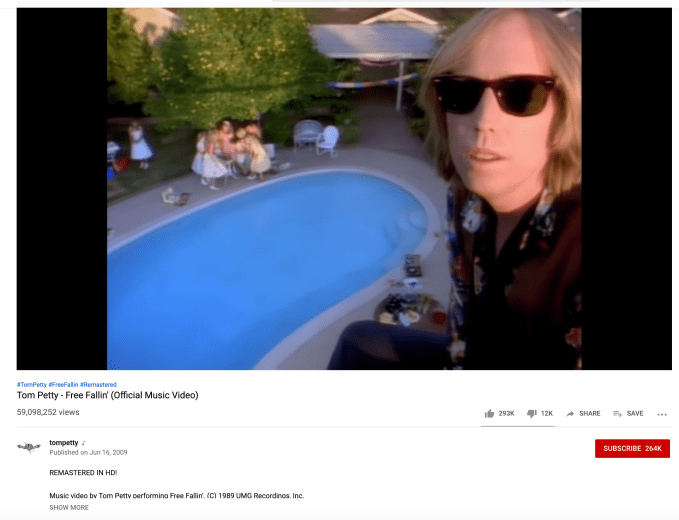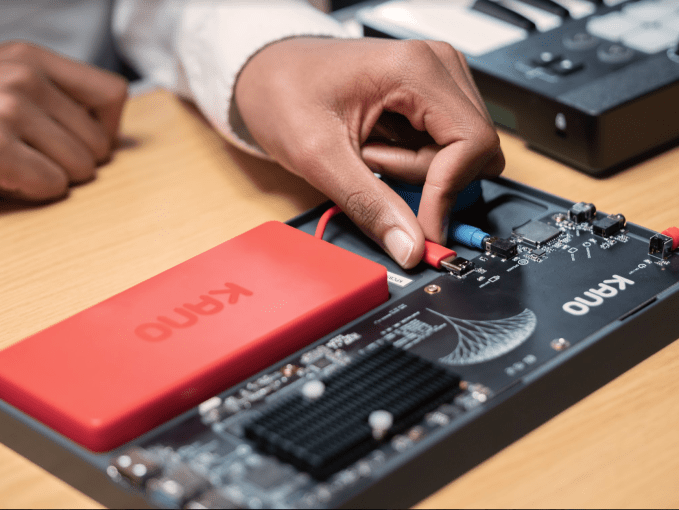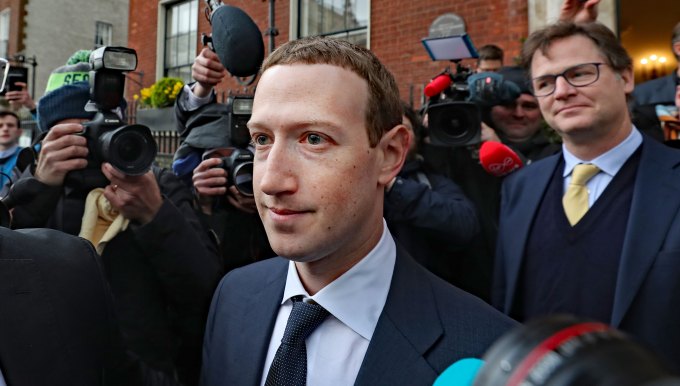As brands pursue audiences online, they are producing more creative content than ever — particularly around Instagram.
In the past twelve months, Brandfolder‘s Brand Index (check out the full Brand Index Report at the end of this article) tracked an 80% increase in videos and other creative material targeted for the platform.
With the Instagram community being a highly engaged group, brands rely on rich, visual content to connect to them. With the proliferation of new Instagram features, like video, Stories, multi-photo carousels, and IGTV, each subset requires its own content, further inflating the need for more brand creative.
The growth in brand creative isn’t just due to audience demands, however. The shelf life of brand assets has fallen as more brands compete with other content (and each other) for user attention.
In 2016-2017, the average asset shelf life was 395 days. From 2017-2018, it was 280 days, with varying lifespans across file type and industry. That’s a 29% decrease in lifespan. Over the next few years, we predict this number will continue to decrease.
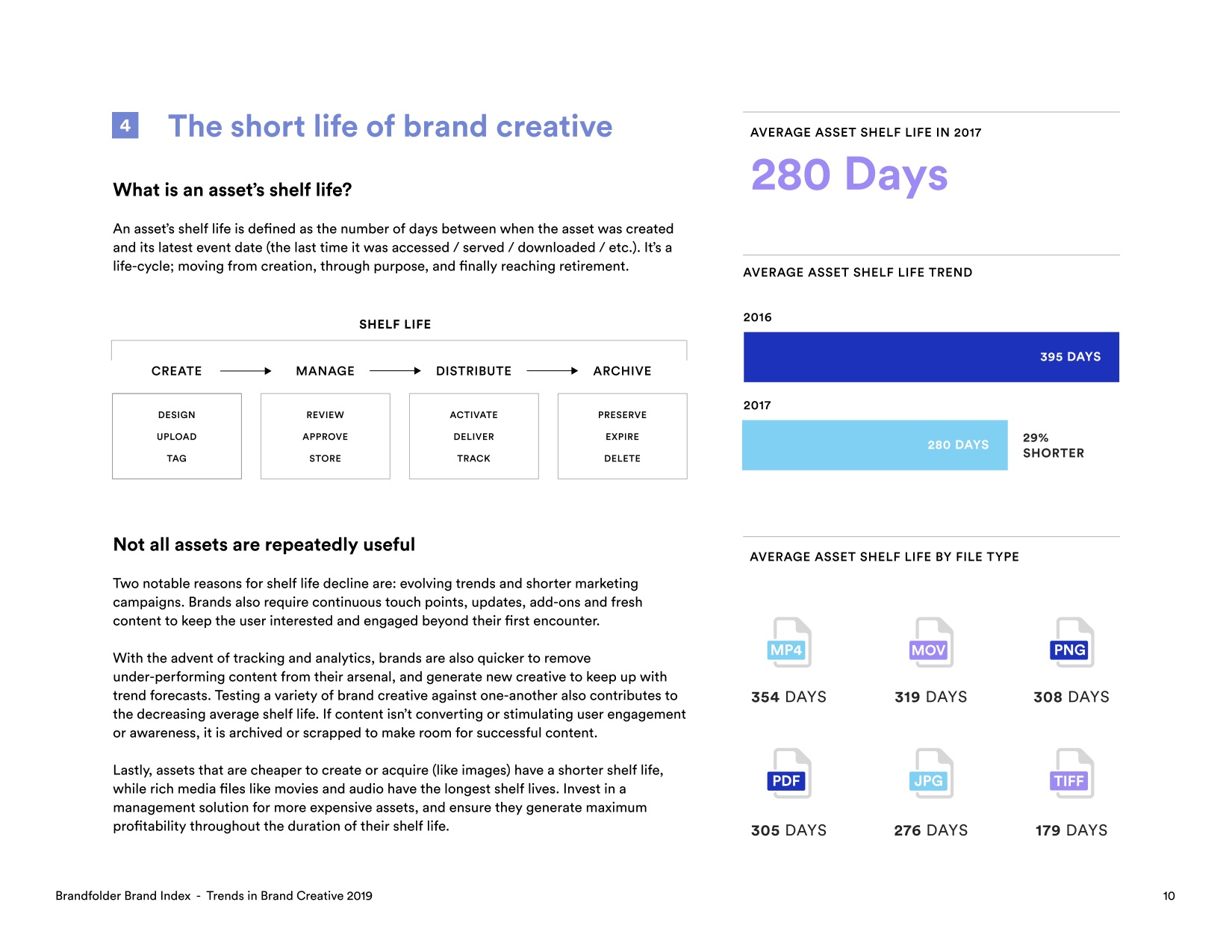
Check out the full Brandfolder Brand Index Report at the end of this article.
Which means, as brands are becoming increasingly dynamic and getting serious about personalization, the need for brand creative, more frequently, will continue to skyrocket in order to stay current and relevant.
To bring this to life, think about the last professional sports game you watched. You noticed one team on the field was wearing a throwback jersey with an old school logo. At a different game, they were back to wearing their normal jerseys with the most current logo.
Later in the season, however, the team is wearing pink jerseys for Breast Cancer awareness. This is a prime example of a dynamic brand expressing their creativity while adapting to varying circumstances, events, and audiences. All of this necessitates fluid brand creative.
But what exactly is brand creative? In the broadest sense, it refers to the all-encompassing collection of online and offline creative assets that a business uses to represent its brand. When we refer to brand creative, we refer to assets of all types–like videos, social media posts, product photography, lifestyle imagery, sales materials, logos, fonts, 3d renderings, and much more.
At Brandfolder, we are focused on delivering intelligence about our customer’s brand creative. We house and manage millions of creative assets from companies of all sizes–anyone from small-scale mom-and-pop shops to large-scale Fortune 10 companies.
And within this massive creative data set, our data science team extracts actionable insights through asset scoring algorithms, prediction formulas, collections, classification tools, and uniqueness analysis, to name a few.
Through these analyses mentioned above, our data science team created the Brand Index– a collection of high-level brand creative trends that CMOs, brand managers, agency professionals, and designers should use to guide their strategic campaigns and deliverables. It was built on discoveries from tens of thousands of creative assets stored in our digital asset management platform from more than 6,000 brands between 2016-2019.
Some brands house asset counts as low as 60, while others house as many as 38,000 assets or more. Specific information analyzed within the Brand Index includes amounts of assets, file formats, asset orientation, asset shelf life, event-based interactions with assets, and more. This information was then combined with the customer’s industry and anonymized to remove any identifying and brand-specific information.
In the Brand Index, companies can learn things like why and how brands’ digital footprints are growing exponentially. From 2017-2018, total asset count on a by-brand basis skyrocketed by 81%. And, it’s on track to continue climbing.
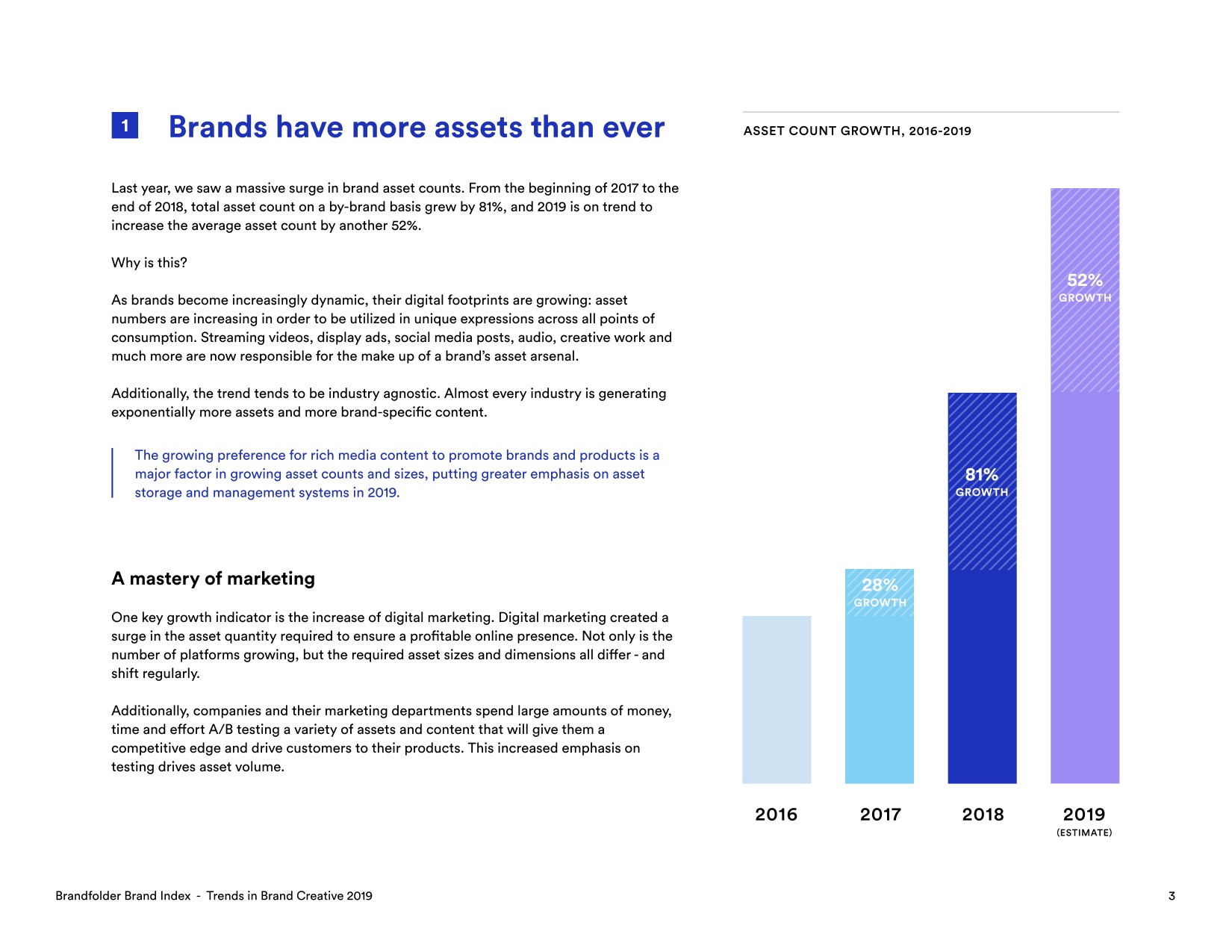
Check out the full Brandfolder Brand Index Report at the end of this article.
A major factor for this digital asset boom could be the increasing demand for rich and personalized media on multiple channels, putting an even greater emphasis on the need for a robust digital asset management platform.
Additionally, as CMOs and design directors are putting more time and effort into their brand creative, the need for understanding which assets perform better, when and where, will continue to rise. Brands are already taking advantage of optimizing their creative content based on rich insights.
Thus, by integrating testing data with a platform that provides asset-specific performance insights, brands will have the competitive edge they need to continue retaining and building equity in the minds of their consumers.
Our findings also show that companies should take note of the shift in file type and how brand creative needs to become increasingly dynamic in order to keep delighting their customers. Rich media files used for engaging and dynamic advertising are on the rise–with video being a key player.
Videos have become the go-to file format supporting a variety of marketing and business goals like sales, retention, upsell opportunities, customer experience, education, thought leadership, and more. JPGs still tend to be a brand favorite, however, gone are the days that these JPGs only live in one place. Asset versatility and responsiveness are critical for the increase of digital channels. Which leads me to my next point: brand identity.
Most brands now have at least four logo orientation and color variations that contribute to consistency and cohesion across their growing portfolio of channels. The brands that are succeeding in the marketplace have animated logos and other engaging asset types that they can switch out on any channel with the snap of a finger.
And as mentioned earlier, if the average shelf life of an asset differs by file type with a current average being 280 days or less, which file formats should brands continue to invest in order to maximize their ROI?
But, what does asset shelf life really mean? Asset shelf life is defined as the number of days between when an asset was created and its latest event date (the last time it was accessed, viewed, downloaded, distributed, etc.). An asset is just like a living, breathing creature. It moves from creation through purpose and finally reaches retirement or its, sometimes timely, archival.
Not all assets are created equal, however. With the creation of AI & ML technologies, brands are getting smarter about their content’s performance. High-performing brands are quicker to remove underperforming content from their arsenal and generate new brand creative to keep things fresh.
And with video on the rise, that also takes a big chunk of change out of marketing and creative budgets. Thankfully, but not ironically, we’re seeing that the asset types that take a larger investment also have longer shelf lives.
Companies should invest in a management solution for more expensive assets to ensure they are generating the maximum reach and profitability throughout their lives.
As brands look to scale their identities and creative asset production, as well as their distribution and delivery strategies, companies should take advantage of the Brandfolder Brand Index in order to ensure they aren’t left behind with the constantly evolving landscape.
Read the full Brandfolder Brand Index below:
from TechCrunch https://ift.tt/2xjpOy4
via IFTTT

